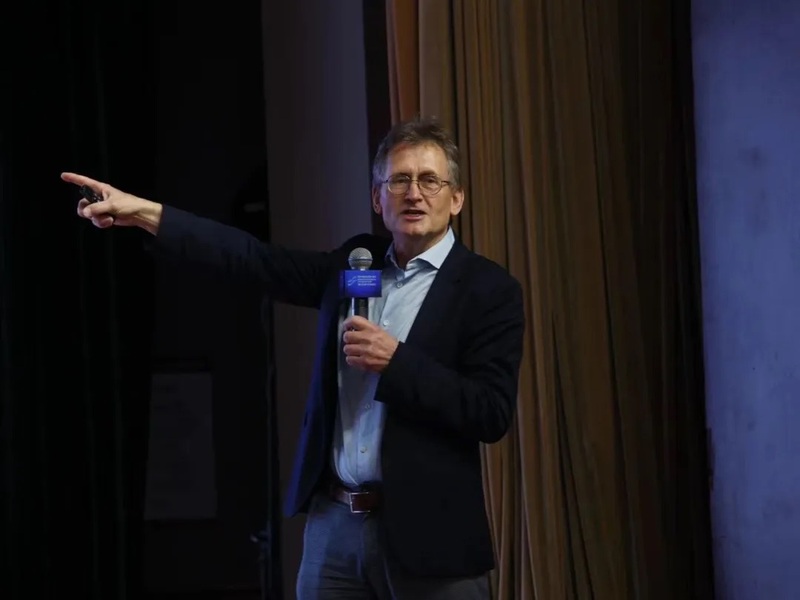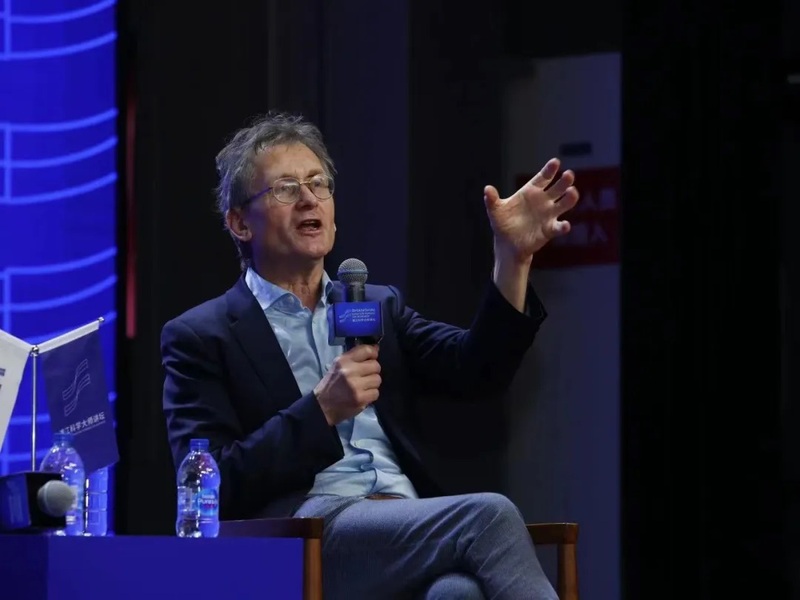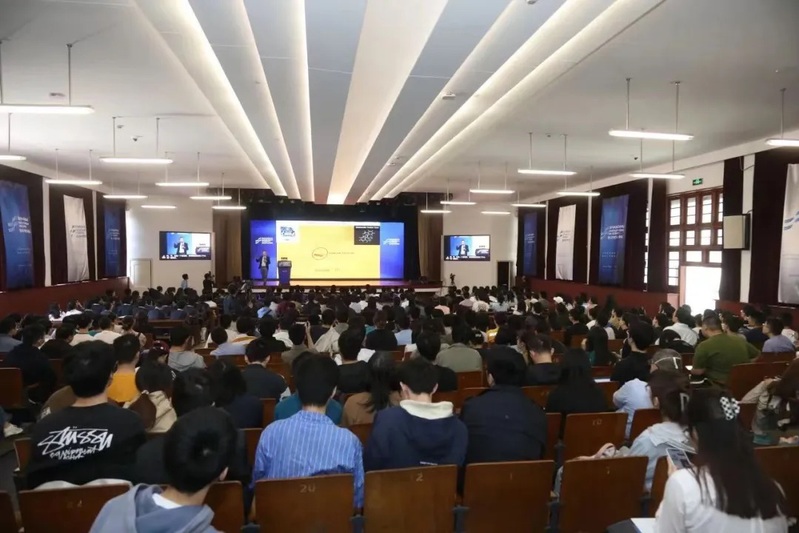Some people say that if you've won the Nobel Prize, you don't need to study anymore, said Bernard Lucas Feringa, the recipient of the 2016 Nobel Prize in Chemistry, shaking his head. That's not true. Learning from each other, appreciating each other. That is very important throughout your whole life.

On May 10, Shanghai Master Forum on Science was held at Fudan University. This Dutch scientist enthusiastically shared his research stories and insights into academia and innovation with the topic The Art of Building 'Small': From Molecular Switches to Molecular Motors.
A Nobel Master from a Dutch Farm
Many years later, facing young audiences, Feringa always reminisces about his childhood farm life.
In Feringa's memory, everything in his hometown was so novel and interesting. The most important thing for young people is to ask questions, he said. The joy of discovery is to ask questions, especially to the young people here.
In the attic of the farm, little Feringa had a small chemical laboratory, which was his first territory in the kingdom of chemistry. There, he synthesized compounds by hand, observed beautiful crystals, and embarked on an adventure in science.

I enjoy the beauty of the molecular world, but realize in this beautiful garden of science and knowledge, we often get lost.
With a passion for molecular research, Feringa enrolled at the University of Groningen.
The possibility of winning the Nobel Prize decades later was something Feringa had never thought about. It's like an athlete in the Olympics who doesn't think about winning a gold medal all the time. It requires hard training and a bit of luck.
Feringa's main research focuses on, molecular machines, which are devices assembled from various molecular-level components. Molecular switches are a significant research result within this field. Feringa playfully winked: The eye is the simplest biological switch. Molecular switches bring the transition between 0 and 1 to the nanoscale.

Feringa believes that the photosensitivity of molecular switches and their precision in targeting treatment areas make them very promising in the pharmaceutical industry. As we all know, bacterial resistance is a 'time bomb' for humanity. We have produced antibiotics that can be activated by light, enabling on and off control through light exposure.
He demonstrated an experiment experiment, where bacteria in a petri dish could grow normally in the dark but could not survive in the light. This means that future medicines will be safer.
5 People, 8 Years, to Create a 2-Nanometer Miniature Car
What kind of attitude should we adopt towards the future? Feringa paused slightly, then gestured resolutely and gently clenched his fist.
The best way to predict the future is to 'invent the future'.
What is the most important issue in controlling the movement of molecular motors? That is to control the rotation of the motor, including speed and direction. The first molecular motor Feringa developed could only complete one rotation in an hour, You can't put this motor on a car, it's too slow, while the latest molecular motor can rotate 10 million circles per second making an astonishing improvement.

Feringa went further and launched a synthetic muscle research project, utilizing molecular motors to facilitate muscle contraction. When a student asked about synthetic muscles, Feringa waved his hand and enthusiastically invited the person to come up and do an arm wrestling match. After losing the game, he joked:
I can't beat you now, but when I can install synthetic muscles, with so many molecular motors working together, I will definitely be much stronger than you! Let's make a bet and compete again in five years.
By coupling molecular motors, Feringa's team also developed a four-wheeled molecular car. On this car, which is only 2 nanometers in size, the rotational force of the molecular motors is transformed into translational force, propelling the world’s smallest car into motion.

To create this nanoscale car, Feringa and four students spent 8 years. At first, the four-wheeled nanocar they made had all wheels rotating in the same direction, which caused the car to spin in place instead of moving forward. The team spent 3 years correcting the error. However, Feringa is not afraid of making mistakes and advises everyone not to be afraid of them either.
In scientific research, all potential approaches must be investigated. No one knows which paths are viable at first, so you must allow for mistakes and learn from them.
Academic Research Requires Two Legs to Walk
Molecular motors, nanocars, molecular machines... For many people, Feringa's research may seem like a science fiction movie far away from everyday life.
In fact, the transition from basic research to practical application is never immediate. One of the issues that Feringa is most troubled by is being frequently asked, What is the use of your research?
The molecular motors we have now are equivalent to the electric motors of the 1830s. Researchers at that time were only demonstrating various rotating cranks and wheels in the laboratory, with no idea that these would lead to the creation of washing machines and fans. Feringa believes that through the joint efforts and cooperation of different disciplines, a path for future development can be paved.

Feringa envisions that now, molecular motors and nanocars can already perform exciting movements such as rotation, translation, and propulsion. In 50 years, they may see substantial applications and achieve even greater successes.
How can we create the future and solve the current difficulties of humanity? Molecular nanotechnology can provide a path, and other sciences have their own paths, but the most important thing is to combine our wisdom and efforts. Feringa's team and collaborators include many scholars from different countries and professions. He is also inspiring more research ideas through learning and communicating across disciplines.
Feringa consistently offers encouragement to young students and suggests that the key to steady progress in academic research is to walk on two legs, which means pursuing innovative breakthroughs and groundbreaking results while also conduct some research in familiar fields to accumulate academic reputation and enhance academic capabilities. In this way, even if you encounter failure, there will be a cushion.
Vice chairmen of CPPCC Shanghai Committee WU Xinbao and QIAN Feng attended the forum. JIN Li, president of Fudan University and academician of the Chinese Academy of Sciences, presided over the forum and delivered a speech.
(END)
Presented by Fudan University Media Center
Writer: CHEN Shuyang
Editor: WANG Menqi, LI Yijie
Designer: George Li


